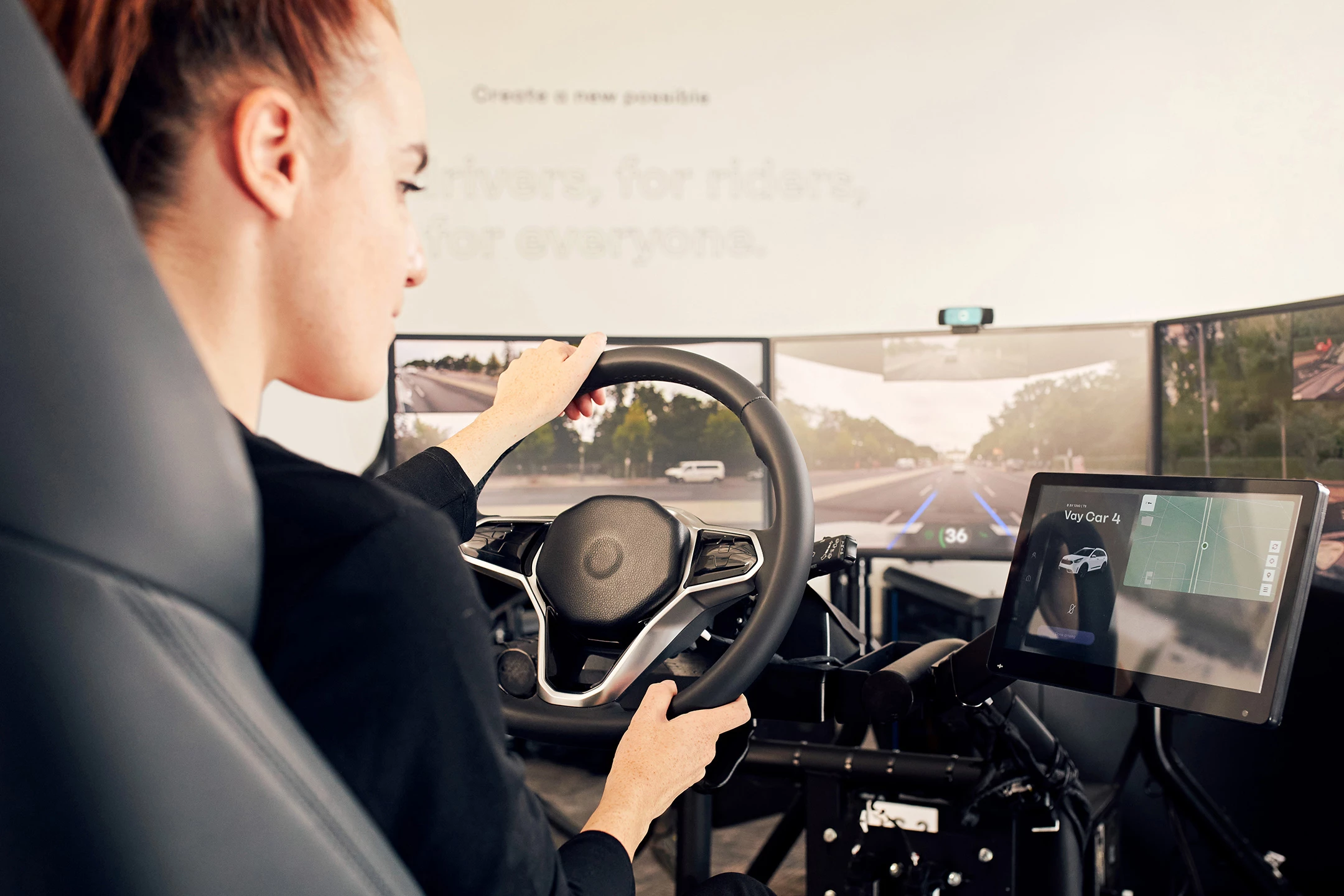A number of companies are now running remote-control rental car services, in which "teledrivers" guide an empty car out to you by remote control, and then you drive it around yourself. It's a weird halfway step towards fully autonomous robotaxis.
German company Vay has just launched such a service in Las Vegas, joining local company Halo.car, which started taking paid rides six months ago. Estonia's Elmo Rent, meanwhile, kicked the whole idea off in November 2022, opening the world's first teledriving rental car service in Estonia – it's now pushing out through several European countries.
"Teledrivers" sit in front of video game-style driving rigs with lovely wide screens, steering wheels and pedals, in a central office – or indeed, wherever the rig lives – and commandeer cars over 5G wireless connections when they need to be moved. Halo says the latency is around 20 milliseconds each way – at least, in Vegas – so the teledriving experience is responsive enough to feel more or less like in-person driving.
Customers, meanwhile, simply request a rental car through an app, and a teledriver gets it out to them before handing over the keys. In Vay's case, the company charges 30 US cents a minute while you're driving, and 3 cents a minute while you're parking. Not that you need to find a parking spot, anyway; you can drop yourself off and hand the car back over to a remote driver again if that's most convenient.
At this stage, it doesn't seem as if these companies have any interest in having their remote teledrivers act as chauffeurs. That makes sense; these cars are doubtless more expensive than a regular cab or rideshare car, so they can only compete by reducing labor and having the teledrivers move as many cars as possible, rather than being tied up taking passengers from A to B.
Teledriving represents a weird halfway step to the fully autonomous Johnnycab future companies like Waymo, Baidu, Cruise, Zoox, Pony.ai and others are furiously working to bring about. Self-driving robotaxi trials are underway in several geofenced areas, primarily in California and parts of China, but these trials haven't exactly gone off without a hitch, so despite enthusiasm among certain circles, it doesn't look like they'll be rolling out everywhere for some time yet.
So these new remote control services are attempting to grab hold of market share in the interim. They don't completely eliminate driving jobs, they just consolidate them into the smallest remote workforce possible. And when the full self-driving robotaxi tech is ready, they might be able to incorporate it and reduce that driving workforce yet again, to a point where it only needs to handle edge cases that the autonomous systems can't deal with.
It's a strangely analogue and fleshy way to get to a fully autonomous end point, but we're interested to see how it plays out for these companies.






